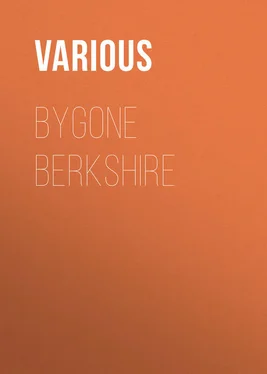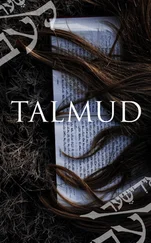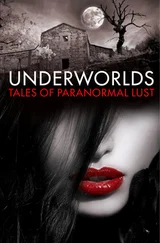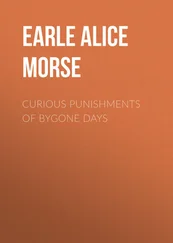Various - Bygone Berkshire
Здесь есть возможность читать онлайн «Various - Bygone Berkshire» — ознакомительный отрывок электронной книги совершенно бесплатно, а после прочтения отрывка купить полную версию. В некоторых случаях можно слушать аудио, скачать через торрент в формате fb2 и присутствует краткое содержание. Жанр: foreign_prose, на английском языке. Описание произведения, (предисловие) а так же отзывы посетителей доступны на портале библиотеки ЛибКат.
- Название:Bygone Berkshire
- Автор:
- Жанр:
- Год:неизвестен
- ISBN:нет данных
- Рейтинг книги:3 / 5. Голосов: 1
-
Избранное:Добавить в избранное
- Отзывы:
-
Ваша оценка:
- 60
- 1
- 2
- 3
- 4
- 5
Bygone Berkshire: краткое содержание, описание и аннотация
Предлагаем к чтению аннотацию, описание, краткое содержание или предисловие (зависит от того, что написал сам автор книги «Bygone Berkshire»). Если вы не нашли необходимую информацию о книге — напишите в комментариях, мы постараемся отыскать её.
Bygone Berkshire — читать онлайн ознакомительный отрывок
Ниже представлен текст книги, разбитый по страницам. Система сохранения места последней прочитанной страницы, позволяет с удобством читать онлайн бесплатно книгу «Bygone Berkshire», без необходимости каждый раз заново искать на чём Вы остановились. Поставьте закладку, и сможете в любой момент перейти на страницу, на которой закончили чтение.
Интервал:
Закладка:
After the Castle itself, the chief glory of Windsor is the Great Park, the remnant of a tract of 180 miles in circuit, which formed the happy hunting-ground of our mediæval kings. It is joined to the town and Castle by the Long Walk, the noble avenue of elms planted by Charles II. The Park is gently undulating, and dotted here and there with magnificent oaks and beeches, sometimes standing singly, sometimes in thick clumps. Looking from George the Fourth's Gateway to the gilt statue which he erected to "the best of fathers," the beauty of the landscape thrills one with the satisfaction of perfection. The spirit of romance seems to pervade each fairy glade and hill, and visions of days long past arise before us, when lord and ladye fair on fiery steeds rode through the enchanted spot, and paused in their pursuit of the bounding deer, moved by the genius of the place, to whisper words of love. An oak measuring 26 feet 10 inches, at the height of 5 feet from the ground, is reckoned to be 800 years old. Three oaks in Cranbourne Chase, the oldest of which is probably 450 years, are called respectively, Queen Anne, Queen Charlotte, and Queen Victoria, these names it is scarcely necessary to explain, having been given since they evolved from their sapling stage. Herne's Oak, which Shakespeare memorialises in The Merry Wives , was, according to some blown down in a storm in 1863, and a sapling was planted to mark the spot. According to others it was cut down in mistake with other decayed trees by order of George III. At one corner of the Park there are some dozen oak trees, all as old as the Norman Conquest.
In fact, wherever one glances, be it at an old elm, or a bit of old carving half hidden in grass, or a china cup in the drawing-room, or a picture in the library, from the marble sarcophagus erected in memory of the Prince Consort to a blade of grass on the terrace, one finds endless cause for interest and deeper investigation. Such historical associations cling to every stone or crumb of earth, such romantic stories are whispered to one at every turn, such echoes of old-world times are re-called at every foot-fall, that no one could weary of visiting again and again this wondrous spot, to dream of bygone faces, fashions, and manners. And as one gazes, one feels the same pride in its beauty as stirred the hearts of Henry III. and Edward III., one understands the desire of the world-satiated Henry VIII. to rest in peace by the side of his best loved queen under those cool gray stones, and one feels a deep thankfulness that the storm-tossed Charles is at rest for evermore in that calm, sanctified, world-remote spot.
And Windsor does more than turn one's thoughts down the vista of past ages, it ennobles, it purifies. A reverence, an awe that only the sublime can inspire, takes possession of one's heart when one contemplates this most glorious of England's royal homes. Nor has the hand of time dimmed its lustre. Windsor is still the home of the illustrious Queen whom all her subjects delight to honour. It is associated with tender memories of all the joys and many sorrows which the Ruler of our mighty Empire has experienced during the course of her long and glorious reign. And when we reflect on all that our Queen has done for the welfare of our nation, and of the vast Empire over which she rules, we can but echo the Laureate's words: —
"May she rule us long,
And leave us rulers of her blood
As noble till the latest day!
May children of our children say,
She wrought her people lasting good;
Her court was pure; her life serene;
God gave her peace; her land reposed;
A thousand claims to reverence closed
In her a Mother, Wife, and Queen."
And ever mindful of her great sorrow let us say: —
"The love of all Thy sons encompass Thee,
The love of all Thy daughters cherish Thee,
The love of all Thy people comfort Thee,
Till God's love set Thee at His side again."
Wallingford Castle
The Castle, to which Wallingford owes its importance through six centuries of our annals, may have had its origin in a primitive fortress belonging to the original settlement upon the river-bank. But its actual history begins in the reign of Edward the Confessor, who, according to Domesday, had fifteen acres here, where a body of his huscarles or military retainers lived; these acres being the same that Milo Crispin, the Norman lord of the Castle, was occupying at the time of the Survey.
Whatever fortress existed in Edward's day was held by Wigod, the kinsman and cupbearer to the King; and the fact that Wigod favoured the cause of the Norman Duke, coupled with the circumstance of an advantageous position on an important ford of the river, caused Wallingford and its Castle to become what they were in history.
Hither, in consequence of the welcome offered by the English Thane, William came after the Battle of Hastings, when London was fortified against him; and here he received the homage of Archbishop Stigand and the English nobles. Before moving back towards London he made the Norman influence secure at Wallingford by the marriage of his favourite chieftain, Robert D'Oilgi, with Wigod's daughter, who became eventually, if she was not already, heiress of the castle; for her only brother fell in battle, fighting by William's side against his son Robert. The King remained to take part in the festivities of the marriage, and ordered D'Oilgi to build a castle upon his new inheritance. In five years the castle was completed. D'Oilgi had an only daughter, Maud, who was married to another Norman chieftain, Milo Crispin, and after his death she became the wife of Brien Fitz-Count.
Tradition and history point to each of these lords in turn as having made additions to the castle which their father-in-law erected; for Crispin is said to have been the founder of the Collegiate Church in the southern precinct, and Fitz-Count is recorded as the builder of the famous dungeon called Cloere Brien, or Brien's Close, in the north-western precinct. Further additions and renovations were made in later times; but under these Norman owners the Castle must have extended itself to the dimensions which it retained to the last, and of which we can still trace the relics.
From the river bank a few yards above the bridge it is easy to form an idea of what the great Norman fortress was. The lofty mound upon which the Keep was built, perhaps a prehistoric tumulus in its origin, is still the most prominent object, though all vestiges of the tower and its outworks have now disappeared, giving place to a luxuriant growth of forest trees. Close beside this mound, traces of the southern moat are to be seen, opening out upon the ditch which still separates the castle grounds from the meadow beside the river. The broken ground rising within the ditch shows the line of the eastern front of the castle with its projecting bastions overlooking the river, though all that now remains is an ivy-covered ruin with the opening of a large window, known as the Queen's Tower. In the background, and more to the right, is another fragmentary ruin, forming a central portion of the north wall; while a modern boat-house marks the outflow of the moat at its north-eastern angle. From this point along the northern front a triple entrenchment is clearly shown by the undulations of the ground; the innermost ditch, close beneath the wall, being the moat of the Castle itself, while the second is the moat of the Castle precincts enclosing a space of intermediate ground on the west and south, and the outermost is the moat which enclosed the whole town; the three being brought close together in parallel lines along this side of the Castle. It must have been from this point of view, that Leland, in Henry the Eighth's reign, described the Castle as having "three dikes, large, deep, and well watered; about each of the two first dikes are embattled walls, sore in ruin and for the most part defaced; all the goodly buildings, with the towers and dungeon, be within the three dikes." Camden, who tells that "the size and magnificence of the Castle used to strike me with amazement when I came hither, a lad, from Oxford," describes it more accurately as "environed with a double wall and a double ditch."
Читать дальшеИнтервал:
Закладка:
Похожие книги на «Bygone Berkshire»
Представляем Вашему вниманию похожие книги на «Bygone Berkshire» списком для выбора. Мы отобрали схожую по названию и смыслу литературу в надежде предоставить читателям больше вариантов отыскать новые, интересные, ещё непрочитанные произведения.
Обсуждение, отзывы о книге «Bygone Berkshire» и просто собственные мнения читателей. Оставьте ваши комментарии, напишите, что Вы думаете о произведении, его смысле или главных героях. Укажите что конкретно понравилось, а что нет, и почему Вы так считаете.

![Various Various - Selected List of Nimmo, Hay, & Mitchell's Publications [1890]](/books/571841/various-various-selected-list-of-nimmo-hay-mit-thumb.webp)










